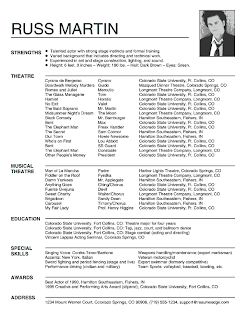คำนาม (Nouns) หมายถึง คำที่ใช้เรียกแทนคน สัตว์ สิ่งต่างๆ สถานที่ คุณสมบัติ สภาพ อาการ การกระทำ ความคิด ความรู้สึก ทั้งที่มีรูปร่างให้มองเห็น และไม่มีรูปร่าง เช่น
คน : Man, Woman, Girl, Nurse, Teacher, etc…
สัตว์ : Dog, Cat, Fish, Elephant, etc….
สิ่งของ : Hospital, House, Dish, Television, Telephone, etc…
คำนามสามารถแบ่งประเภทได้หลายกลุ่มขึ้นอยู่กับแต่ละตำรา ในที่นี้ขอแบ่งคำนามออกเป็นสี่กลุ่มดังนี้
1.
Common Nouns หรือ คำนามทั่วไป เป็นคำนามที่ใช้เรียกคน สัตว์ สิ่งของ สถานที่ทั่วๆไป ความคิด เช่น person, animal, place, thing, idea โดยไม่เฉพาะเจาะจง หรือคำที่ใช้เรียกสิ่งของ เช่น sign, table, hill, water, sugar, atom, elephant สถานที่ เช่น city, hill, road, stadium, school, companyเหตุการณ์ เช่น revolution, journey, meeting ความรู้สึก เช่น fear, hate, love เวลา year, minute, millennium ซึ่งคำนามทั่วไปจะประกอบด้วย
คำนามนับได้ (Countable Nouns) ซึ่งมีทั้งคำนามเอกพจน์ (Singular Nouns) และคำนามพหูพจน์ (Plural Nouns) เช่น dog, man, coin , note, dollar, table, suitcase, day, month, year, action, feeling
คำนามนับไม่ได้ (Uncountable Nouns) หรือ Mass Nouns อยู่ในรูปเอกพจน์ เท่านั้น เช่น furniture, luggage, rice, sugar , water ,gold, music, love, happiness, knowledge, advice , information
2.
Proper Nouns หรือ คำนามเฉพาะ วิธีการสังเกตง่าย ๆ ก็คือ คำนามกลุ่มนี้จะขึ้นต้นด้วยตัวอักษรตัวใหญ่เท่านั้น เช่น ชื่อคน Pancake Kemanij ชื่อสัตว์ Cesar ชื่อประเทศ Thailand ชื่อถนน Sukhumvit ชื่อมหาวิทยาลัย Chulalongkorn University เป็นต้น
3.
Abstract Nouns คือ คำนามของสิ่งที่ไม่มีรูปร่าง ไม่สามารถสัมผัสได้ด้วยประสาททั้ง 5 ( touch- สัมผัสได้, sight-มองเห็นได้, taste-ชิมได้ , hearing- ได้ยิน, smell- ได้กลิ่น ) ใช้บอกลักษณะ สภาวะ อาการ วิธีการสังเกตง่าย ๆ ก็คือ เมื่อแปลเป็นภาษาไทยมักจะมีคำว่า ความ หรือ การนำหน้าอยู่ด้วย รวมทั้งชื่อศิลปวิทยาการต่างๆ
Abstract Nouns จะมีที่มาจากคำกริยา (verb) เช่น decision, imagination, speech, etc. คำคุณศัพท์ (adjective) เช่น beauty, poverty, wisdom, happiness, etc. และ คำนาม ( noun) ด้วยกันเองบ้าง เช่น childhood, friendship
4.
Collective Nouns เป็นคำนามแสดงความเป็นหมวดหมู่ของกลุ่มของคน สัตว์ สิ่งของ เช่น family , class, company, committee, cabinet, audience, board, group, jury, public, society, team, majority orchestra, party เป็นต้น รวมทั้ง a flock of birds, a herd of cattle ,a fleet of ships ซึ่งสามารถใช้ได้ทั้งรูปเอกพจน์และพหูพจน์ขึ้นอยู่กับวัตถุประสงค์ในการใช้ในครั้งนั้น ๆ ว่าต้องการให้เป็นหนึ่งเดียวหรือเป็นแต่ละส่วน แต่คำนามยังเป็นรูปเดิม เปลี่ยนแต่รูปกริยา เช่น
เอกพจน์ : The average British family has 3.6 members.
พหูพจน์: The family are always fighting among themselves.
แต่อย่างไรก็ตาม Collective noun บางคำมีความหมายเป็นนามพหูพจน์เท่านั้น เช่น people, police, cattle นอกจากนี้ยังมีรูปแบบ คำวลีผสมด้วย of เพื่อเน้นให้ความเป็นหมู่หรือคณะให้ชัดเจนขึ้น รูปแบบคือ Collective noun + of + common noun ตัวอย่างเช่น
a flock of birds a group of students
a flock of sheep a pack of cards
a herd of cattle a bunch of flowers
ซึ่งบางตำราอาจจะแบ่งกลุ่มคำนามอีก 3 ประเภท คือ material nouns, concrete nouns และ mass nouns เป็นกลุ่มคำนาม แต่ในที่นี้ขอแบ่งกลุ่มนามเหล่านี้อยู่ในกลุ่ม common nouns
Concrete Nouns เป็นคำนามของสิ่งที่มีรูปร่างสามารถสัมผัสได้ด้วยประสาททั้ง 5 ( touch- สัมผัสได้, sight-มองเห็นได้, taste-ชิมได้ , hearing- ได้ยิน, smell- ได้กลิ่น ) เช่น book , chair, water, oil , ice cream เป็นทั้งนามนับได้ และนับไม่ได้ มีลักษณะตรงกันข้ามกับ abstract nouns.
Material Nouns คำนามซึ่งมีรูปร่าง อยู่รวมกันเป็นกลุ่มก้อน แต่นับไม่ได้ เช่น iron, gold, air, copper, stone, cotton, brick, paper, cloth, water, coffee, wine, tea, milk หรือคำที่ใช้แสดงความมากน้อยด้วยปริมาณ (quantity) เช่น
a bowl of rice
two boxes of cereal
five bottles of beer
Mass nouns เป็นคำนามสิ่งของที่นับไม่ได้ ทั้งมี และไม่มีตัวตน ( uncountable nouns และ abstract nouns ) เช่น sugar, iron , butter, beer, money, blood, furniture, vehicle, courage, gratitude, mercy , accuracy มีลักษณะดังนี้ คือ จะไม่อยู่ในรูปพหูพจน์ ไม่ใช้ a , an , the นำหน้า ถ้าใช้เป็นการทั่วไป determiners ที่ใช้นำหน้าคือ some และ any
















